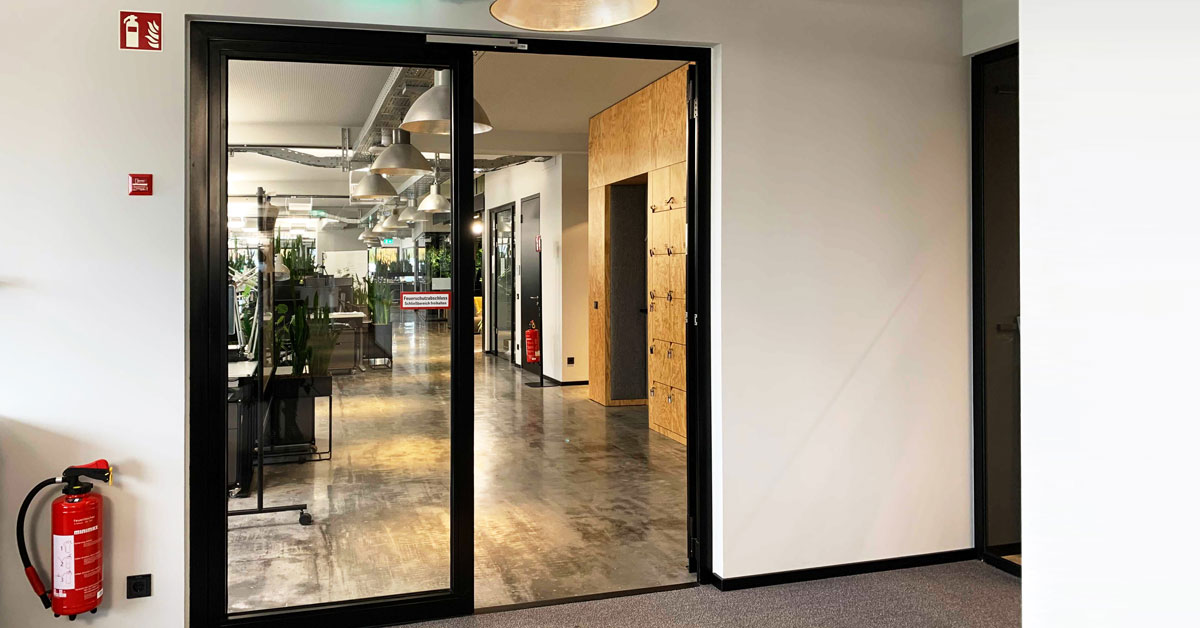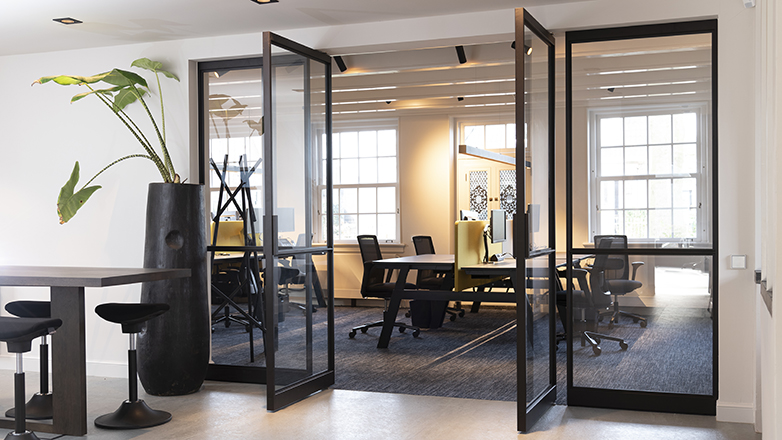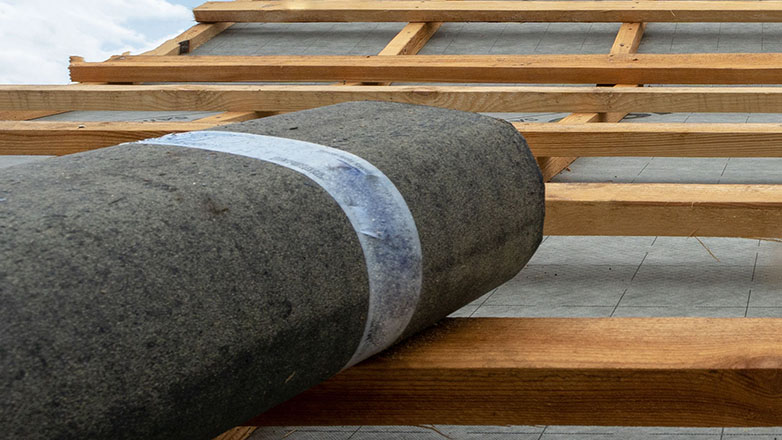Fire resistance classes – Important information at a glance
The fire resistance class is a decisive parameter in structural fire protection. It defines how long a building component can withstand fire without losing its function.

Table of contents
- The importance of structural fire protection
- The difference between building material class and fire resistance class
- Factors influencing fire resistance
- Two standards for fire resistance classes
- Fire resistance classes according to DIN 4102-2
- Fire resistance classes according to DIN EN 13501-2
- Fire resistance classes in comparison
The importance of structural fire protection
Protection against fires and fire consequences in buildings is important for people, animals and also for material assets. Therefore, there are regulations on the fire behaviour of building materials and components. The task of structural fire protection is primarily to prevent fires, but also to contain them and to secure escape and rescue routes.
Escape routes of this kind are part of the structural fire protection measures, as are fire protection signs, fire-resistant room partitions and fire-retardant or fire-resistant building components. The classification into fire resistance classes also helps here. There are also technical and organisational fire protection measures. Technical measures include fire extinguishers, sprinkler systems, smoke extraction systems and automatic fire alarm systems. Fire safety regulations, drills, instructions and fire safety officers are part of organisational fire protection.
Constructional fire protection is a challenge for planning due to its high complexity. Legally, there are strong regulations. Requirements for different buildings – such as the fire resistance class – can be found in the respective state building regulations as well as special building regulations. In general, the larger a building, the higher the fire protection requirements.
The difference between building material class and fire resistance class
The fire behaviour of building materials is assessed in DIN 4102-1 and in the European classification system of DIN EN 13501-1 and divided into building material classes. Since this does not take into account the interaction of building materials, there are further standardisations for the fire behaviour of building components, the fire resistance classes.
The properties of building material class and fire resistance class differ fundamentally. The first determines whether a building material is combustible and easily or hardly flammable. The fire resistance class, on the other hand, indicates how many minutes a part of a building can withstand fire. If a building material is not combustible, it can still melt when exposed to high heat and thus not remain load-bearing for long, such as steel. The counter-example is wood, which is combustible but does not melt in a fire, but chars, and thus fulfils its function for longer.
The divisions into the two classes influence the decisions for or against a building material as well as the decision about the components.
Factors influencing the fire resistance duration
- Fire load (single or multiple-sided)
- Building material or composite used
- component dimensions (cross-sectional dimensions, slenderness, centre distances)
- structural design (connections, supports, brackets)
- Static system (statically determinate or indeterminate bearing, uniaxial or biaxial load transfer, restraints, etc.)
- degree of utilisation of the strengths of the building materials used as a result of external loads
- Arrangement of claddings (sheathing, plaster, suspended ceilings)
Two standards for fire resistance classes
Depending on the fire resistance duration, building components are divided into different fire resistance classes. Occasionally, they are also referred to as fire protection classes. The fire resistance duration depends both on the fire behaviour of the building materials used and on the strength and position within the building component. The division into classes is contrasted with the building inspection requirements.
There are currently two standards:
- DIN 4102-2: Fire behaviour of building materials and components; components, terms, requirements and tests (German standard)
- DIN EN 13501-2: Fire performance classification of construction products and types of construction – Part 2: Classification using results from fire resistance tests, except for ventilation systems (European standard)
The evidence for this is provided by tests of the German standard DIN 4102-2 or the European DIN EN 1363-1: Fire resistance tests – Part 1: General requirements.
Component requirements are described in the respective building regulations and confirmed in the standards by the corresponding tests. The assignment of the terms used, such as “fire-retardant” or “fire-resistant”, to the respective fire resistance classes can be found in the current building code lists. In addition, further verifications in the form of verification or applicability verifications are required for the execution.
Fire resistance classes according to DIN 4102-2
In fire tests, the fire resistance duration is determined using a specified temperature-time characteristic, the unit temperature-time graph. The fire resistance duration achieved in the test is measured in minutes and divided into fire resistance classes accordingly. The specifications are usually 30, 60, 90 or 120 minutes.
| Building inspection requirement | Fire resistance class | Fire resistance duration in minutes |
|---|---|---|
| Fire retardant | F 30 | ≥ 30 |
| Highly fire retardant | F 60 | ≥ 60 |
| Fire resistant | F 90 | ≥ 90 |
| Highly fire resistant | F 120 | ≥ 120 |
| High tax resistant | F 180 | ≥ 180 |
To explain: If a wall withstands fire for more than 30 minutes, the building component is classified in fire resistance class F 30 and meets the fire-retardant requirement.
The fire resistance classes can be assigned to the building authority fire protection requirements for the different building components. For example, larger buildings of building class 5 according to the Model Building Code require fire-resistant components of class F 90, such as storey ceilings or partition walls between the units in use.
The different building components can be assigned to the different fire protection requirements.
The different building components are represented by the following abbreviations of the fire resistance classes:
- F = Walls, ceilings, columns, beams, stairs
- F = Fire walls
- W = Non-load-bearing exterior walls, parapets
- T = Fire protection closures, e.g. doors
- L or K = Ventilation ducts
- S = cable penetration seals
- I = installation shafts and ducts
- R = pipe penetrations
- E = Functional integrity of electrical cables
- F = Glazing, impermeable to thermal radiation
- G = Glazing, heat radiation permeable
In addition, these additional letters describe the fire behaviour of the materials contained in the component:
- A = made of non-combustible building materials
- AB = in the essential parts made of non-combustible building materials
- B = made of combustible building materials
The flammability of the building material is indicated by adding the building material class. An example of this is the class F 30-B: It is therefore a building component of fire resistance class F 30 that consists of combustible building materials.
Fire resistance classes according to DIN EN 13501-2
The European fire resistance classification system is more complex than the German one and allows for additional specifications. As a result, the safety standard is considered higher and it is expected to gradually replace the German classification. In the European standard, there are – independent of its function in the building – the criteria load-bearing capacity, room closure and thermal insulation under the effect of fire. For these, classification times (10, 15, 20, 30, 45, 60, 90, 120, 180, 240 or 360) have to be demonstrated in minutes to give the classifications together. In addition, the performance criteria can also be considered in isolation from each other and the classification supplemented by other characters.
These are the performance criteria for all components:
- R = Load-bearing capacity (Résistance)
- E = space closure (Etanchéité)
- I = Thermal insulation (Isolation)
Selected additional signs:
- W = Limitation of radiation penetration
- M = Mechanical action on walls (impact stress)
- i -> o (in-out) = Direction of classified fire resistance duration for non-load-bearing exterior walls
- a <-> b (above-below) = direction of the classified fire resistance period for suspended ceilings
- f (full) = exposure to “full” ETK
- ef = exposure to external fire
The classification of a wall construction into fire resistance class R 90 is carried out if a wall construction remains fire load-bearing for up to 100 minutes, without taking into account the room closure and the thermal insulation. If the room closure is taken into account, the shorter time is used for classification. Thus, if the room closure fails after 70 minutes, this corresponds to class RE 60. If the thermal insulation lasts 40 minutes, class REI 30 is assigned.
Fire resistance classes in comparison
When comparing products according to German and harmonised European classification, it is important to note the different meanings of the labels, as the same abbreviated letters are used in both. For example, “R” in the German DIN 4102 describes the component pipe penetration seals, whereas in the European EN 13501 it means the load-bearing capacity of a component. Thus R 90 in the German standard stands for a pipe penetration seal whose fire resistance duration is over 90 minutes. In the European standard, on the other hand, it stands for a load-bearing component that can withstand fire for more than 90 minutes. Both classifications correspond to the building authority requirement “fire-resistant”.
Beispiele für vergleichbare Feuerwiderstandsklassen nach DIN 4102 und DIN EN 13501
| Bauteil | Klassifizierung nach | |
|---|---|---|
| DIN | EN | |
| nichttragende Wand | F 30 | EI 30 |
| Stahltragwerk | F 90 | R 90 |
| Kabelabschottung | S 90 | EI 90 |
| Lüftungsleitung | L 90 | EI 90 |
| Installationskanal | I 30 | EI 30 |

Pia Gottszky
Author and journalism expert with a focus on architectural topics in a social context.




